Creo 7.0 : Generative Design and Features
PTC has uncovered subtleties of the most recent Creo 7.0 : Generative Design and Features, which will be accessible on April 14. There are four key zones of center in the forthcoming delivery: generative structure, reenactment driven plan, multi-body structure, and profitability improvements. These were featured in a Livestream introduction reporting Creo 7.0 from Paul Sagar, PTC’s VP of Product Management.
“Creo 7.0 conveys the up and coming age of plan development with progressive new abilities… [that] permit designers to fabricate better items quicker than any time in recent memory,” Sagar said.
While generative structure innovation has been accessible in other CAD stages for a few years, Creo 7.0 clients will currently approach the algorithmic plan collaborator. Generative structure is as yet going through growing torments, however its appeal is the guarantee of rapidly homing in on lightweight and manufacturable plans.
“Jacobs [Engineering] expects that utilizing Generative Design will abbreviate configuration time by 20% and produce parts which are unfathomably lightweight, bringing about critical fuel reserve funds,” said senior Jacobs engineer Jesse Craft in a draw quote for Sagar’s introduction. As per Sagar, Jacobs Engineering is utilizing PTC’s generative structure to help configuration NASA’s cutting edge spacesuit.
The generative structure will be completely incorporated into the Creo 7.0 plan condition, where clients can indicate their plan space, limitations and burdens, materials, and assembling necessities. From what we could find in the live stream, Creo’s interpretation of generative structure appears to be very like that in Fusion 360 from Autodesk, one of the early supporters of generative plan.
A few highlights of Creo generative plan, for example, the capacity to run different investigations all the while in the cloud, won’t be accessible until Creo 7.0.2. At first, the product will just help basic enhancements, yet Sagar says warm and modular improvements will arrive in a later form. At the hour of composing, we have been not able to affirm precisely how clients will get to generative plan in Creo 7.0.
As indicated by Sagar, “Creo 7.0 is only a hint of something larger” for generative plan.
In 2018, PTC partnered with reproduction organization ANSYS to bring Discovery Live, ANSYS’s constant recreation innovation, straightforwardly into Creo 6. For Creo 7.0, PTC has proceeded down the track of reproduction driven plan.
“What item advancement groups truly need is a reproduction device that is so quick, so responsive, so easy to utilize that it can truly stay aware of the structure designs consistently.
Creo 7 brings transient warm examinations into Creo Simulation Live, while past deliveries were restricted to consistent state warm investigation. Clients can set starting temperature boundaries and switch among transient and consistent state.
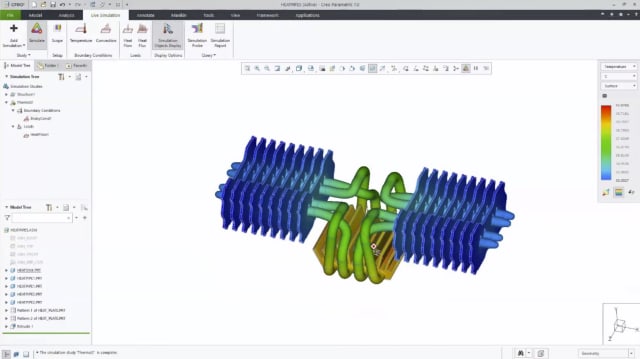
Moreover, Creo 7.0 acquaints the capacity with include tests as boundaries for constant reproduction, which can be utilized as factors to compute the ideal structure of a framework.
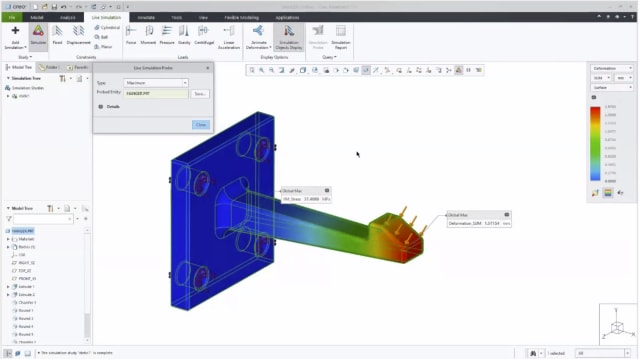
Creo 7 also introduces what Sagar referred to as Creo Simulation Live Plus, which adds support for internal and external fluid flow simulation.
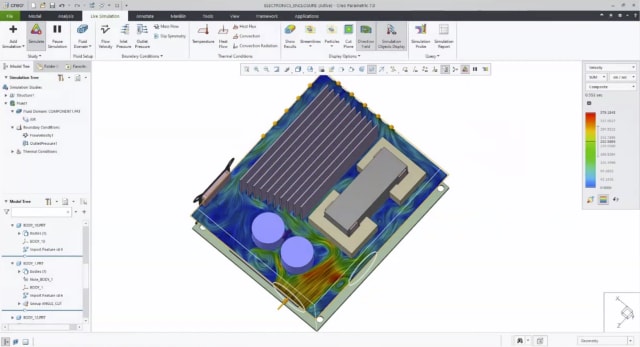
Past constant reenactment, PTC is promoting its ANSYS association with the presentation of Creo ANSYS Simulation, which will see ANSYS solvers coordinated inside Creo 7.0 for more complete examination (to be delivered in Creo 7.0.2).
“Clients will presently have a ground-breaking and rich arrangement of expert level instruments legitimately readily available, supporting auxiliary, modular, and warm material science utilizing the ground-breaking ANSYS auto-coinciding capacities, rearranging the cycle and placing these regularly entangled devices in the possession of each architect, utilizing the entirety of the limit conditions and sources of info straightforwardly from Creo Simulation Live,” Sagar said.
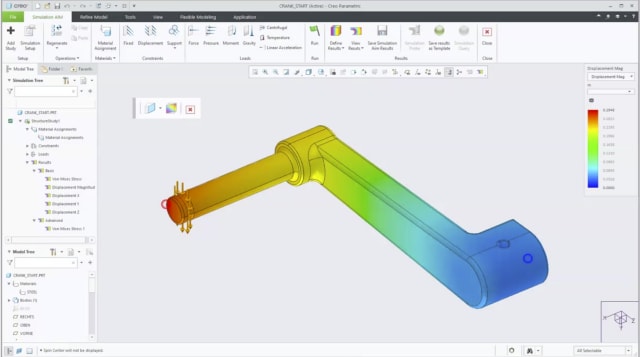
Multibody Design
The following feature of Creo 7.0 is the expansion of new work processes for multi-body structure, which Sagar cases will “permit Creo clients to independently oversee, imagine, and plan mathematical volumes” to empower “more productive and adaptable part plan and improved reusability.” The work processes will be particularly helpful for generative plan, added substance assembling, and reenactment, he noted.
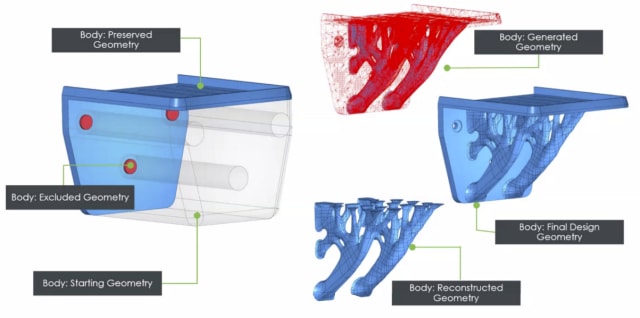
Creo 7.0’s multibody structure work processes will make it simpler for clients to characterize bodies as references for generative plan contemplates, (for example, characterizing the beginning shape and deterrent calculations), added substance producing, (for example, characterizing volumes for cross section creation), and reenactments, (for example, characterizing liquid stream depressions). Sagar additionally asserts the new work processes will make displaying faster as a rule.
“Being able to part your model into various bodies and perform procedure on those individual bodies, for example, standard, adaptable displaying, drastically decreases the time taken to perform configuration change,” Sagar said. “The utilization of bodies permits clients to perform neighborhood procedure on explicit zones of the part, for example, a shell, and give more extravagant designing abilities. The utilization of Boolean tasks gives clients greater adaptability in the plan cycle, having the option to fabricate bodies to go about as apparatuses or negative calculations, accelerating the general structure measure.”
One explicit model is that Creo 7 permits clients to characterize development bodies. Much like development planes, development bodies can be utilized to streamline displaying activities without influencing the final product.
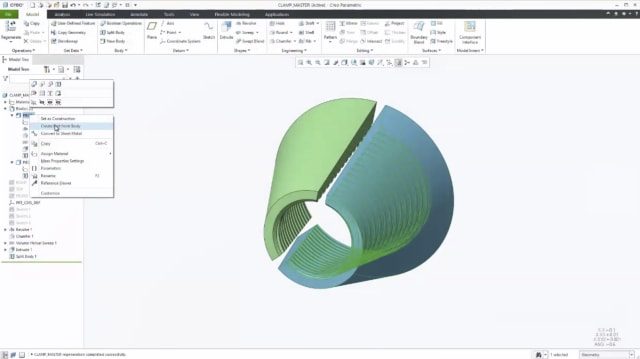
“Many of these workflows could have been achieved in previous releases, but required the use and understanding of surfacing techniques. Using multibody design significantly improves the overall usability of Creo,” Sagar said.
Performance Enhancements
At last, no CAD delivery would be finished without the required rundown of execution upgrades. For Creo 7.0, that rundown incorporates outlining upgrades, with more clear structure purpose representation and simpler reflecting; simpler drafting capacities, for example, permitting clients to adjust drafts on imported calculation; improved model-based plan, with help for the most recent ASME and ISO principles, more pioneer explanation choices, and simpler admittance to drawing view data; improvements to Render Studio, for example, the capacity to include a custom floor plane and delay delivering; upgrades to added substance producing, including extended API uphold and upgraded cross section abilities; and more subtractive assembling choices, including support for Swiss-type turning machines and toolpath featuring during synchronization.
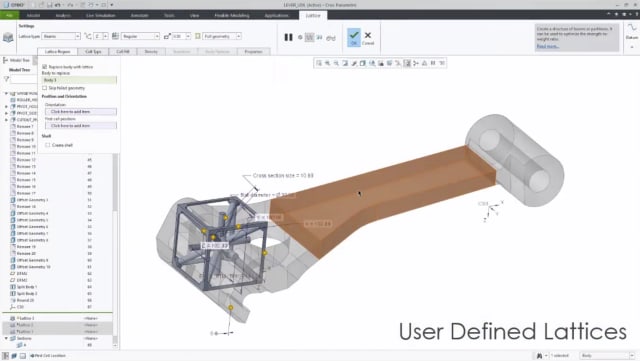
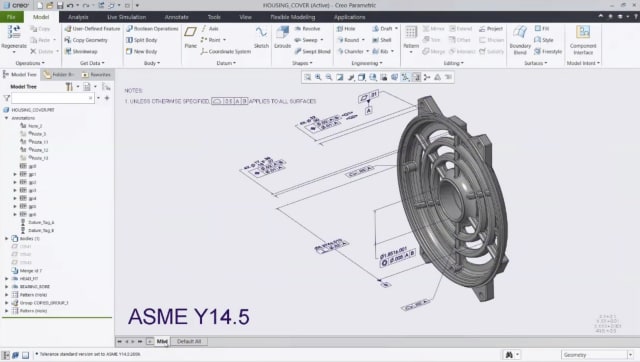
“Creo 7.0 is an acknowledgment of the message around renaissance of structure that we’ve been discussing for some time now at PTC,” Sagar closed. “The presentation of generative plan being a major bit of that proceeded with push for recreation driven structure, with new abilities in liquid stream reproduction, the presentation of the higher loyalty last approval with Creo ANSYS Simulation, just as proceeded with development of our added substance fabricating capacities.”

















No Comments